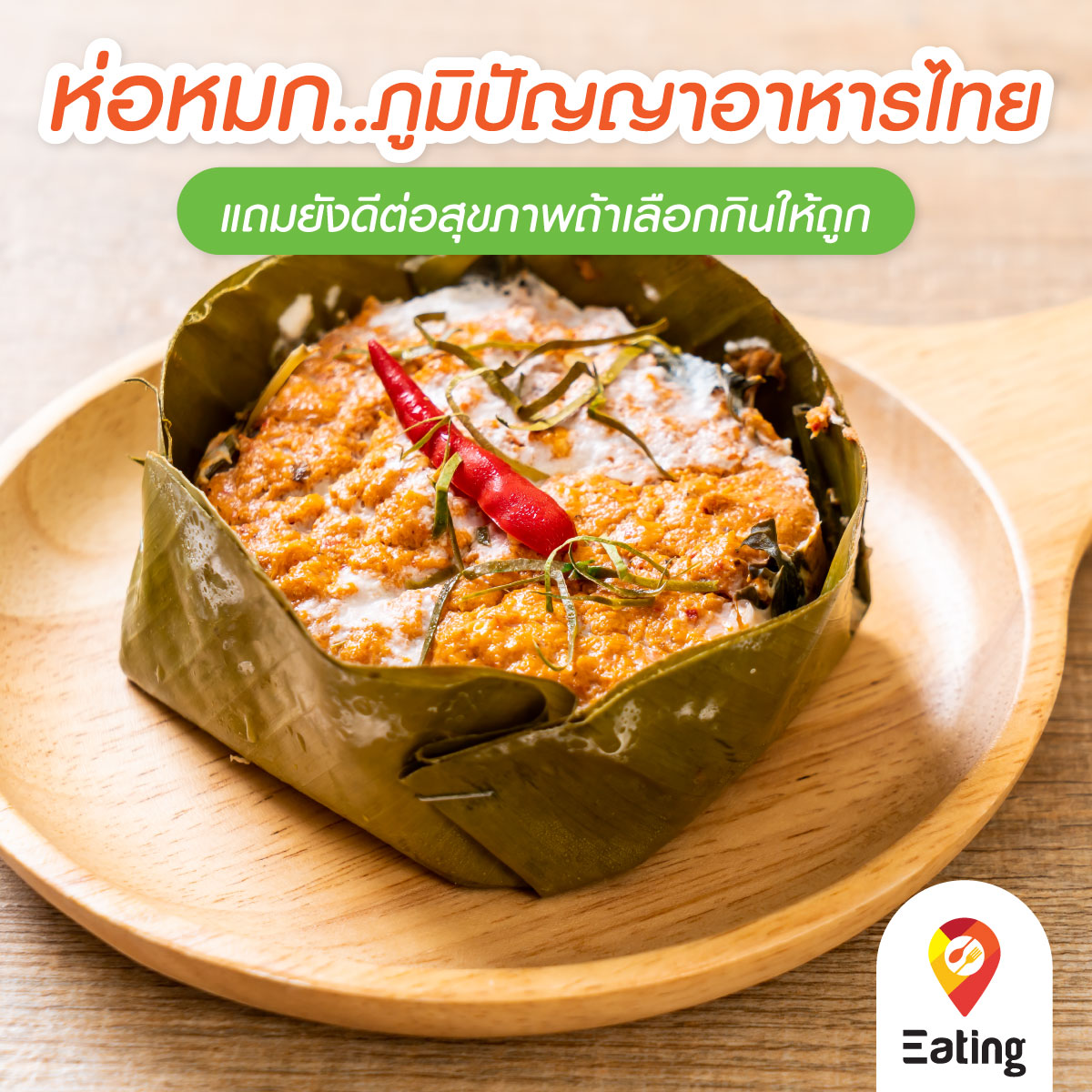Insider
New Experience

ห่อหมก..ภูมิปัญญาอาหารไทย
แถมยังดีต่อสุขภาพถ้าเลือกกินให้ถูก
อาหารไม่ได้เป็นเพียงปัจจัยสี่ที่ช่วยให้เรามีชีวิตอยู่ แต่ยังเป็นสะพานเชื่อมวัฒนธรรมและภูมิภาคต่าง ๆ อีกด้วย อาหารไทย เช่น ห่อหมก แสดงให้เห็นถึงความหลากหลายและความสัมพันธ์กับวัฒนธรรมในภูมิภาคเอเชียตะวันออกเฉียงใต้ อาหารนี้มีวัตถุดิบและวิธีการทำที่คล้ายคลึงกับหมกในประเทศลาว หรืออาม๊อกในกัมพูชา ซึ่งใช้เนื้อสัตว์หรือผักปรุงรสและห่อด้วยใบตองเพื่อการนึ่งหรือย่าง
.
การทำหมกจะใช้เครื่องแกงที่ประกอบด้วยพริกสดหรือพริกแห้ง ตะไคร้ หอมแดง และกระเทียม อาจมีใบมะกรูดโขลกละเอียดผสมเข้าไปด้วย จากนั้นคลุกเคล้ากับเนื้อสัตว์ เช่น ปลา ไข่ปลา ไก่ หรือหมู ปรุงรสด้วยน้ำปลาร้ารสเผ็ดเค็ม และโรยหน้าด้วยต้นหอมหรือใบแมงลัก บางสูตรอาจมีผักชีลาวหรือพริกสดทุบ ห่อด้วยใบตองทั้งแบบพับทบหรือจับอีบกลัดด้วยก้านมะพร้าว แล้วนำไปนึ่งหรือย่างจนสุก
นอกจากการใช้เนื้อสัตว์แล้ว การนำพืชผัก เช่น เห็ดและหน่อไม้ มาปรุงเป็นหมก ก็เป็นที่นิยม โดยเรียกว่า หมกเห็ด หมกหน่อไม้ หมกปลา หรือหมกไข่ปลา ในขณะเดียวกัน คนอีสานจะเรียกอาหารที่ทำจากการคลุกเคล้าเนื้อสัตว์กับเครื่องแกงว่า “หมก” โดยไม่แยกตามวิธีการปรุงเหมือนในประเทศลาว
.
ห่อหมกปลาเป็นอาหารยอดนิยมในหมู่นักชิม โดยเฉพาะห่อหมกปลาช่อน ที่มีรสชาติกลมกล่อม เนื้อแน่น และไม่มีกลิ่นคาว โดยเฉพาะห่อหมกพุงปลาช่อนที่ถือเป็นความอร่อยสุดยอด และมีราคาสูงกว่าส่วนอื่น ๆ
.
ไม่เพียงแค่รสชาติที่อร่อย ห่อหมกปลา ยังมีคุณค่าทางโภชนาการสูง โดยส่วนประกอบที่ใช้ยังเป็นสมุนไพรที่ช่วยในการปรับธาตุและกระตุ้นเจริญอาหารได้เป็นอย่างดี
------------------------------------------------------
Food is not merely a basic necessity that sustains our lives; it also serves as a bridge connecting diverse cultures and regions. Thai cuisine, exemplified by dishes like "hor mok," reflects the richness and interconnectedness of cultures in Southeast Asia. This dish shares similarities in ingredients and preparation methods with "mok" from Laos and "amok" from Cambodia, both of which involve marinating meat or vegetables and wrapping them in banana leaves for steaming or grilling.
.
The preparation of hor mok typically involves using a curry paste made from fresh or dried chilies, lemongrass, shallots, and garlic, often blended with finely chopped kaffir lime leaves. This mixture is then combined with a variety of proteins such as fish, fish roe, chicken, or pork, and seasoned with spicy and salty fermented fish sauce. It is garnished with green onions or Thai basil, and in some recipes, may include coriander or crushed fresh chilies. The mixture is wrapped in banana leaves—either folded or tightly wrapped using coconut fronds—and then steamed or grilled until cooked.
.
In addition to using meat, the incorporation of vegetables such as mushrooms and bamboo shoots in hor mok is quite popular, leading to variations like mushroom hor mok, bamboo shoot hor mok, fish hor mok, or fish roe hor mok. In northeastern Thailand, people refer to dishes made by mixing meat with curry paste simply as "mok," without distinguishing between preparation methods as they do in Laos.
.
Fish hor mok is particularly favored among food enthusiasts, especially the variant made with snakehead fish, known for its rich flavor, firm texture, and absence of fishy smell. The belly of the snakehead fish is especially prized for its exceptional taste and is typically more expensive than other parts.
.
Beyond its delightful flavor, fish hor mok is also highly nutritious, as it includes herbal ingredients that can help balance the body's elements and stimulate appetite effectively.